Why Wrist Pain Can Happen To Anyone
5 Common Causes for Wrist Pain & Injury
Does doing daily activities like lifting a box or holding a plate trigger a sudden and sharp pain at the wrist? Are you frustrated by the wrist pain and loss of strength? Here are five common reason for wrist pain and injury, and why wrist pain can happen to anyone:
1. Not Stretching Enough
We used our hands a lot everyday. We lift and carry bags and groceries with our hands, yet our hands are just as adept with activities which need fine motor skills like holding a pen to write or draw, tightening a screw with a screwdriver or threading a needle. The wrists and fingers not only have to be strong, but also deft and flexible for our numerous tasks.
A painful wrist often includes pain on one or more fingers. This is because muscles that move the wrist also moves the fingers. Some of the same muscles also crosses the elbow and move the forearm. It is why when you have wrist pain, the pain may radiate to the fingers and sometimes also to the elbow.
While we do a lot of activities with our hands, we rarely stretch them. We stretch our ankles and foot, but when was the last time you stretch your wrist or fingers? Perhaps never…
The lack of stretching is the most common reason for wrist pain to occur.
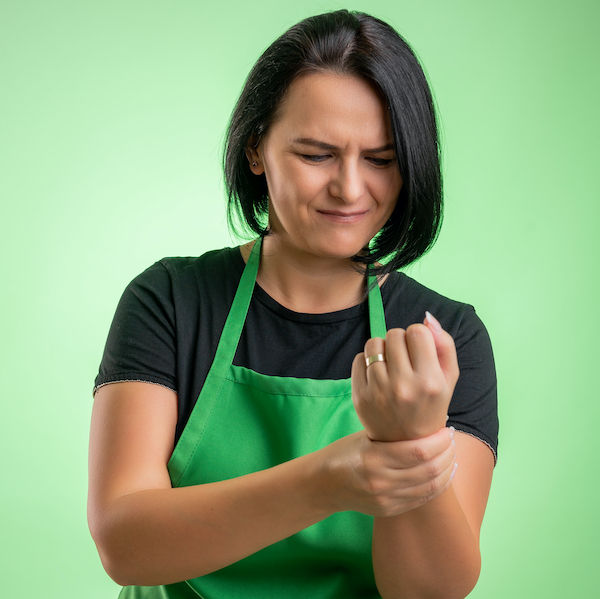
TIGHT MUSCLES CAN CAUSE PAIN & INJURY
Muscles are made up of fibrous connective tissues, which can stretch and lengthen when necessary. When wrist muscles are tight, they stay in a shortened position which limit the range of motion in which the wrist can move. It makes the wrist more prone to injury.
Muscles tissues which are tight are also hard and stiff. As a result, they can restrict blood circulation and entrap the nerves that travel through them. Joint inflammation and numbness on the fingers are often linked to chronic wrist pain where the tightness has been present for a long time which cause a build-up of tension in the area.
CARPAL TUNNEL SYNDROME
Carpal tunnel syndrome is an example of wrist pain, caused by a nerve entrapment. The wrist pain accounts for 90% of all neuropathies.
Neuropathy describes the condition where the peripheral nerves of the fingers or toes are damaged or misfiring.
“Carpal” originates from the Latin word, “carpus” which means wrist. A fibrous non-extendable wall forms a tunnel to protect the median nerve and the wrist flexor muscles as they pass the anterior wrist. Wrist flexors become thick and hard when they are tight. This puts pressure on the carpal tunnel wall which can impinge on the median nerve as it travels through the tunnel.
Wrist flexors are muscles responsible for wrist flexion. For example, we flex the wrist when we type or wring a wet towel. As such, too much typing and housework, where the wrist flexors are in constant use, are common causes of carpal tunnel syndrome. Other causes include genetic predisposition, obesity, autoimmune disorder such as rheumatoid arthritis, and pregnancy.
The wrist pain is accompanied by numbness or tingling sensation on one or more fingers due to the nerve impingement. Other symptoms include loss of wrist strength, a decrease in fine motor co-ordination of the hands and fingers and a painful thumb.
NEUROPATHY, NOT OFTEN MUSCLE RELATED
As with carpal tunnel syndrome, there are many reasons for neuropathy. Most of which are not muscle related. A physical injury like a head trauma, diabetes, high blood pressure, and the presence of a tumour can affect the peripheral nerves. It is also a known side-effect of medication such as chemotherapy medication. Patients often could not feel their fingers and/or toes with the treatment. There is also pain on the wrist and palm.
Neuropathy of the fingers affect a person’s ability to grip or hold an object, and if the symptoms are on the toes, it affects the patient’s ability to walk.
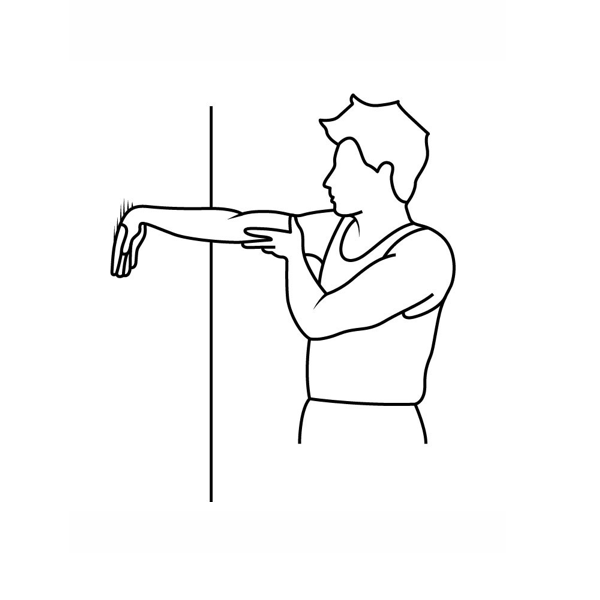
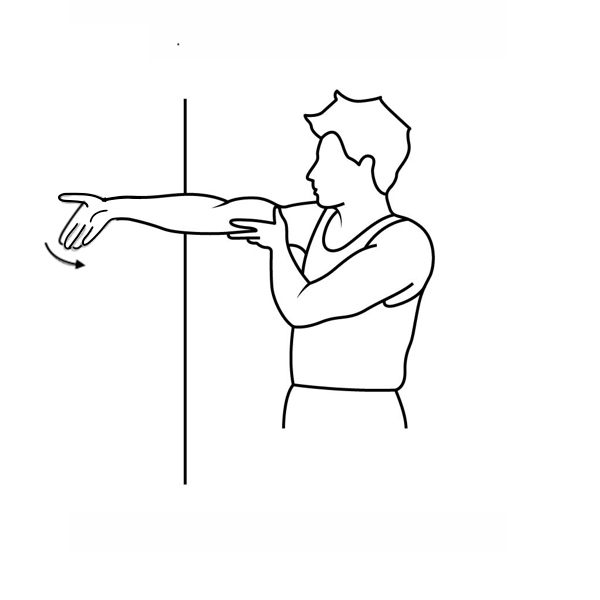
STRETCHING BRINGS RELIEF
There are many factors for neuropathy, and most are due to underlying medical conditions. However, muscle tightness can also create symptoms similar to neuropathy like wrist inflammation, numbness on the fingers and a loss of strength. If no medical reason has been diagnosed for the pain, and if you used your hands and fingers a lot, stretching the tight wrist muscles will likely soothe the nerve, and introduce movement back to the wrist and fingers.
Similarly, for the toes, learning to care for the ankles through stretching and exercises to keep the ankle muscles in good shape may ease the pressure on the peripheral nerves of the toes.
2. Most Hand Activities Require Wrist Pronation & Flexion
Another reason for the prevalence of wrist pain is most of the daily activities, where we use our hands, require both flexion and pronation at the wrist.
Pronation is the action where the palm of the hand is facing down. Holding a pen, washing dishes, wringing a towel, turning a door knob, pressing the lift button or holding a handle bar are some common daily activities which require both wrist pronation and flexion.
As most actions predominately require wrist pronation and flexion, muscles which pronate the wrist and flex the fingers tend to be stronger, as a result often tighter, than muscles responsible for the opposing action of wrist supination and extension, which tend to the weaker.
WRIST PAIN WHEN DOING ARM EXERCISES ON THE FLOOR
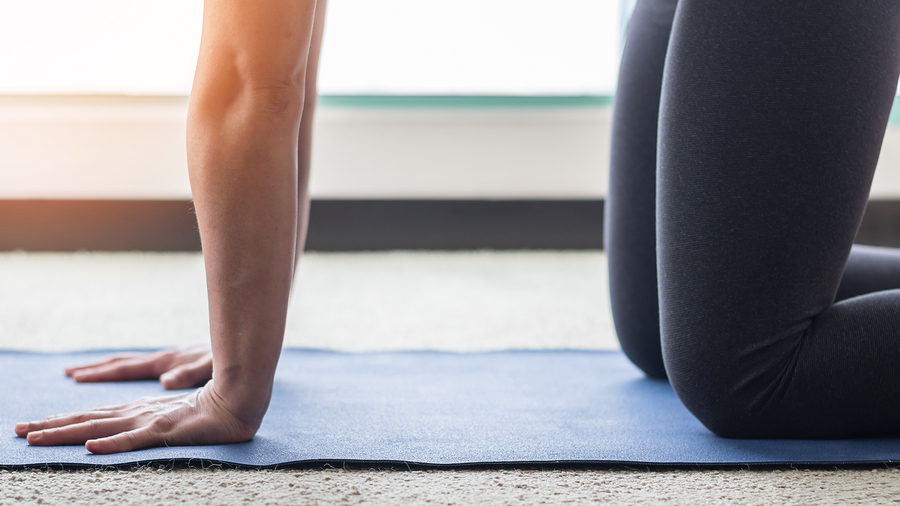
Activities which require wrist extension include arm exercises on the floor. In floor exercises, you have to extend the wrists and fingers in order to place the hands on the floor.
Lifting the cover of a cooking pot is another example of an activity that requires wrist and finger extension, as well as wrist supination. The wrist need to supinate, so the palm faces up when you flip the lid.
Bearing weight on the arm and lifting the cover of a pot are common activities. If your wrist hurts when you do these activities, it is likely your wrist flexors are tight.
3. Too Much Swiping Can Cause Trigger Finger
Mobile phones, and laptops are now integral part of modern life. We used these devices for work and leisure. The starting age of a user has also become younger over the years. Most toddlers would know how to operate tablets before they go school. By the time they go to school, most would already be proficient in the use of a mobile phone and laptop. When they become young adults, most wouldn’t be able to live without a mobile phone in hand.
Owing to our dependence on handheld devices, certain fingers like the index finger, which is primarily use for swiping a touchscreen, and the ring finger which is used with the index to click a mouse are more prone to overuse than other fingers. If you do a lot of texting, the thumb and index fingers are likely to be the most active.
TRIGGER FINGER
Trigger finger is a condition where the finger catch or lock when it is bend and is painful. It is known as “trigger finger” because it is a condition associated with the use of the finger, usual the middle finger, to pull the trigger of a gun. Today, the common cause of trigger finger is no longer gun use, but the prolific use of the fingers for swiping, mouse work and texting.
LOSING GRIP STRENGTH
A tight thumb also poses other problems. The thumb muscles also help us to hold on to an object better. Wrapping the thumb around the fingers (or the action of thumb flexion and adduction) increase our grip on an object. As a result, good grip strength depends on the thumb muscles being strong and nimble.
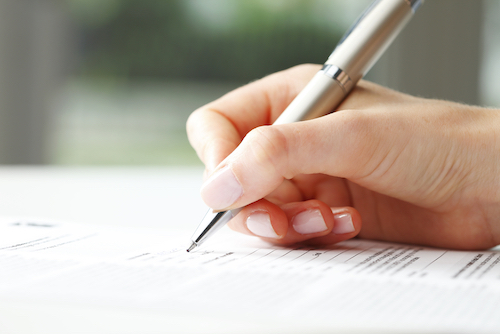
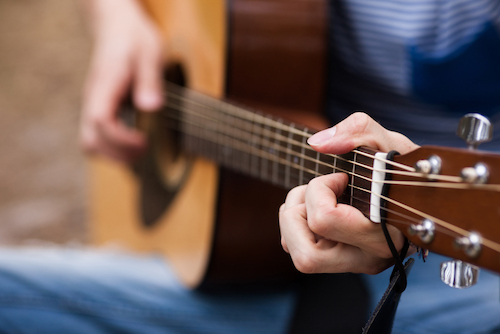
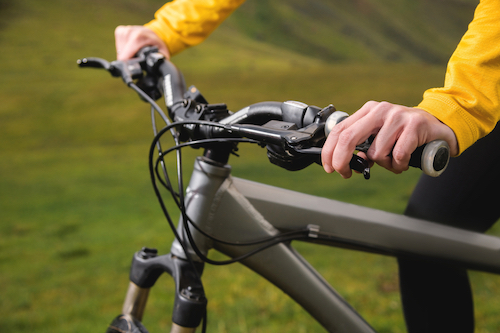
Wrapping the thumb around the fingers improve our grip on an object. Doing too many activities which require a good grip like holding a pen, playing a guitar and cycling, may cause the thumb to become over-active and painful.
Performing too many activities that requires the use of grip strength such as, holding a pen, cycling and playing a guitar can cause the thumb to become overuse. All the activities require a good grip.
If you have a painful thumb, think about the activities that you do. Do they require too much use of your grip strength? If so, stretch your thumb and switch the activities, so that you can give your thumb a rest.
4. Carrying Heavy Groceries

Carrying heavy groceries on a regular basis is another common cause of wrist pain and injury.
Carrying a bag of grocery requires the flexor muscles of the fingers to flex and curl around the handle of the bag. The fingers effectively act like hooks to keep the bag from falling off the hand. It is also likely you don’t just carry a bag of but multiple bags on your trip to the market. You are also likely to have a handbag flung over the shoulder which keep the shoulder high, so that the bag does not slip off the shoulder. Collectively, the weight of the groceries and handbag create tension on the arm, shoulder, wrist and fingers.
While the finger muscles are strong, they are also fairly small (or local muscles) compared to the arm and shoulder muscles. Being the furthest away from the shoulders, if the arm is a lever, they are also the weakest point of the lever. As a result, they are more prone to pain and injury.
5. Tight Shoulder Muscles
Tight shoulder muscles can also affect movement at the wrist. For example, in tennis, to hit the ball, you have to raise your arm (shoulder adduction) to the height of the incoming ball. If your shoulder joint is tight and you cannot raise your arm high enough for every serve, the forearm and wrist muscles have to compensate. You have to rely more on the action of wrist and elbow extension to raise the forearm and send the ball across the net.
TENNIS ELBOW
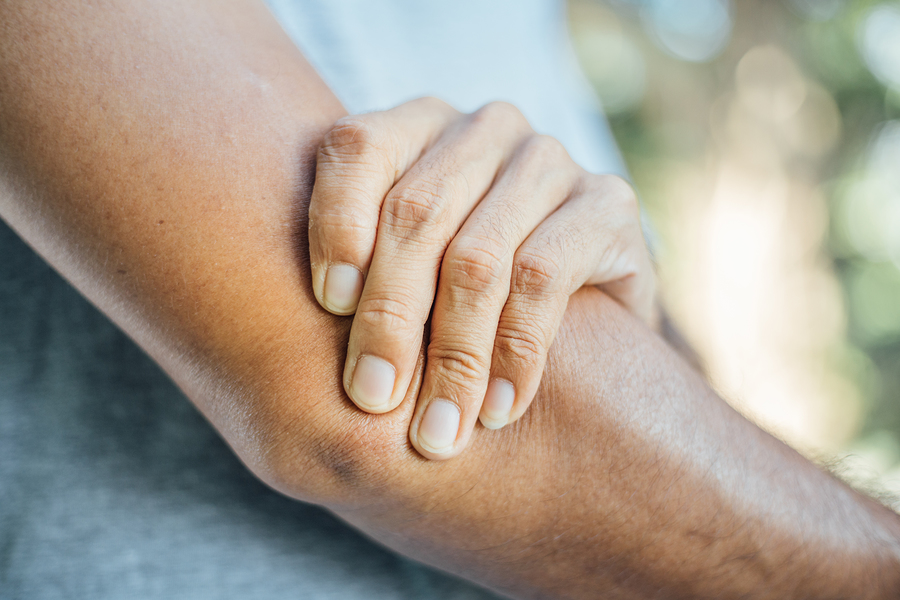
Overtime, the wrist extensors which are attached to the lateral side of the elbow become overactive, which may cause lateral wrist pain or Tennis elbow. Lateral epicondylitis is a condition where the pain is on the outside of the elbow. The pain may radiate down to the wrist and fingers.
GOLFER’S ELBOW
The opposite of tennis elbow is golfer’s elbow, where the pain is on the inside of the elbow or medial epicondylitis. In golf, to make a long distance shot, you have to move the arm from out to in the body . The action is known as shoulder adduction which is the opposite of a tennis serve.
If the shoulder joint is tight, your wrist and elbow muscles have to flex and move more medially in order to drive the club down to hit the ball. Overtime, the wrist flexors which are attached to the medial side of the elbow can become overactive. Pain on the medial elbow and wrist are symptoms of golfer’s elbow.
Tight shoulder muscles can cause wrist and elbow pain to develop. The wrist and elbow muscles have to work harder to make up for the restricted movement at the shoulder joint. So treating a painful wrist or elbow may also involves treating a tight shoulder.
MANUAL THERAPY, STRETCH & STRENGTHEN
We use our hands a lot, and with the pervasive use of mobile phones and laptops, it is easy for the wrists and fingers to become overuse. Unfortunately, most of the activities which we do with our hands involve wrist pronation and flexion, and less wrist supination and extension, which make the wrist muscles more prone to develop imbalances.
If you have wrist pain, has any of five reasons explained the pain for you? Wrist pain is often treatable. Learning to work the wrist muscles in balance through targeted exercise can resolve tension and improve movement at the wrist. They may also soothe irritated nerves.
In more severe wrist pain, where the pain has been present for sometime, intervention like manual therapy to loosen the hard and stiff muscles may be necessary, in addition to stretching, to bring elasticity back to these muscles.
The wrist and finger muscles are often neglected when it comes to maintenance. So get started, give these hardworking muscles some TLC and exercise.
Medical Disclaimer: Always consult your physician if you have an existing pain or a pre-existing medical condition before beginning any exercise. The above information is not intended to diagnose any medical condition or replace your healthcare professional.
Sign Up for a Trial
6996 4396 today to learn more or register below:
Start Today
Testimonials
Other programmes you may like
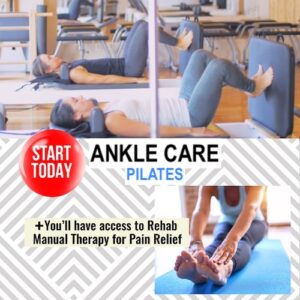
If you often sprain your ankles or lose your balance, it’s time to give your ankles, feet and toes some TLC and exercise. Come stretch and work your feet and toes…
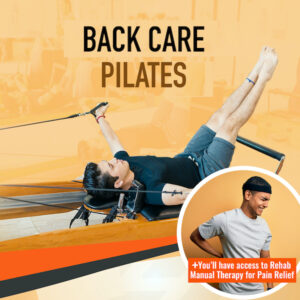
Are you taking more sick leave because of back pain? Or you can’t carry your toddler, move furniture or potted plant for fear of re-injury. Come strengthen your core muscles, say no to back pain…
You may also like
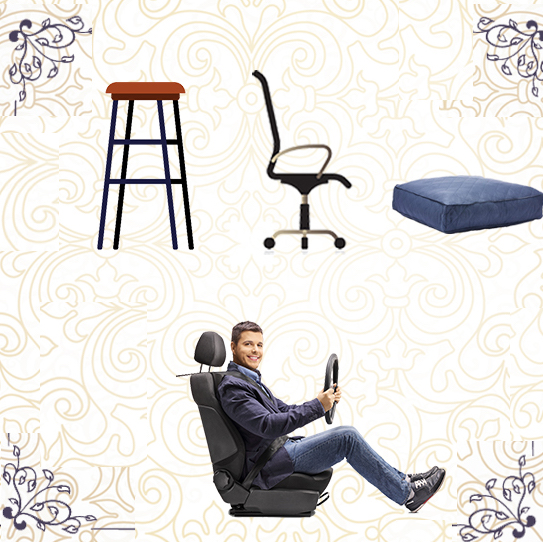 Neck & Back Pain: Are You Sitting Too Much?
Neck & Back Pain: Are You Sitting Too Much?
How Pilates Can Improve Sitting Posture
Is working from home giving you neck and back pain? Improve your sitting posture with Pilates. Discover how core exercises relieve aches and pain related to sitting…
Learn More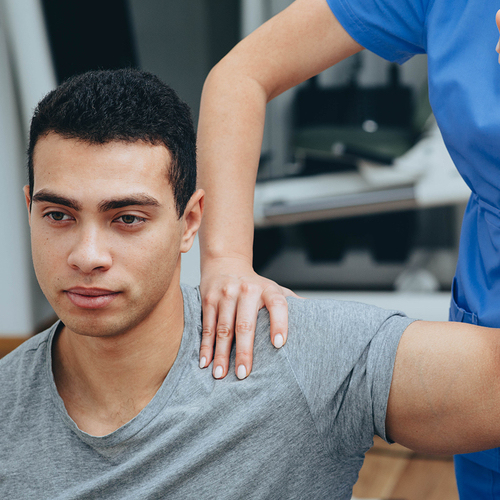 Manual Therapy & Pilates As A Remedy for Sport Injuries
Manual Therapy & Pilates As A Remedy for Sport Injuries
Are you active and fit? You want to do more, but you have a painful joint which increases with activity.
Sport injuries can be broadly classified into two groups, traumatic and overuse injuries. Overuse injuries are more common of the two injuries. According to strength coach, Michael Boyle, the problem with sport medicine is it treats all injuries as traumatic injuries…
Learn More

Write a comment: